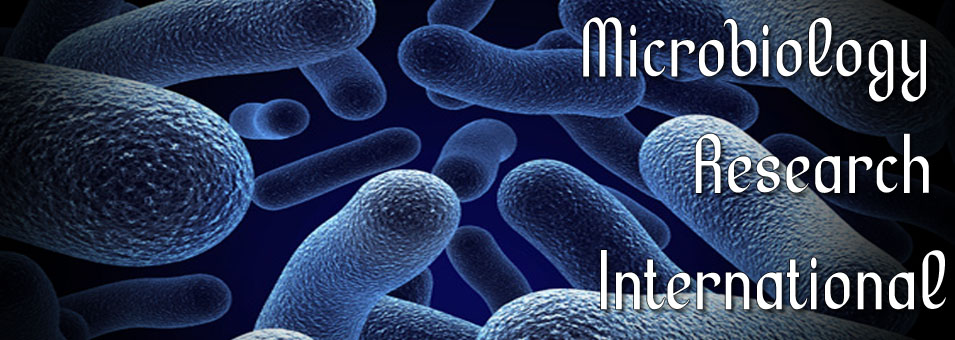Effect of some stimulants on bioremediation of crude oil contaminated soil
Salome Ibietela Douglas, Ibiene Rogers Longjohn and C. J. UgbomaMicrobiology Research International
Published: May 14 2024
Volume 12, Issue 2
Pages 10-29
Abstract
This study investigated the effect of some stimulants on the bioremediation of crude oil-contaminated soil. Uncontaminated soil sample was collected from the Rivers State University Demonstration farm. The baseline physicochemical and microbiological parameters were determined using standard methods before the soil sample was contaminated with 5% crude oil and divided into eight treatment options. The laboratory-based experimental set-ups were prepared in clay pots, designated as unpolluted and crude oil-polluted soil, which served as controls, while other pots contained various concentrations of cow dung, NPK and rhamnolipid. The microbial community dynamics, hydrocarbon degradation percentage, and changes in soil physicochemical properties were monitored for 70 days. The hydrocarbon utilizing bacterial and fungal isolates were identified based on biochemical characteristics. The concentrations of nitrogen, phosphate, pH, temperature, total organic carbon, soil organic matter, and total petroleum hydrocarbon content of the soil were 110.42±0.4 mg/kg, 4.03±0.3 mg/kg, 6.5±0.1, 31.0±0.5oC, 2.01±0.2 mg/kg, 1.0±0.1 mg/kg, and 186±0.6 mg/kg, respectively. The total heterotrophic bacterial, fungal, and hydrocarbon utilizing bacterial and fungal counts were 4.9×107, 7.4×104, 5.9×104 and 4.0×103 CFU/g, respectively. Bacillus, Pseudomonas, Serratia, Cronobacter, Micrococcus and Alcaligenes species were the hydrocarbon-utilizing bacteria identified, while the hydrocarbon-utilizing fungi were Rhizopus, Aspergillus, Rhodotorula, Penicillium, Geotrichum and Mucor species. The NPK stimulated soil (40g and 20g) showed a significant (P<0.05) reduction (80.7 and 79.3%) of total petroleum hydrocarbon (TPH) followed by 40mL and 20mL rhamnolipid with a percentage TPH reduction of 73.4% and 54.4%. The control had the lowest % TPH reduction of 10.1%. However, while the microbial parameters increased due to nutrient utilization, the nitrate and phosphate concentrations decreased except for the decline in microbial parameters towards the end of the monitoring period. The stimulants were effective in enhancing the growth of these organisms, which in turn brought about a decrease in TPH. Hence, the use of rhamnolipid and cow dung is recommended for bioremediation of crude oil-contaminated soil due to the high percentage of total petroleum hydrocarbon reduction recorded in this study, and since these stimulants do not compete in food production.
Keywords: Biostimulants, crude oil, bioremediation, contaminated soil, rhamnolipids.
Full Text PDF
